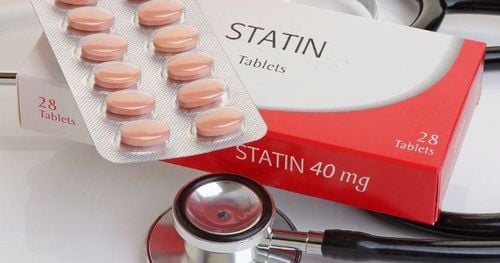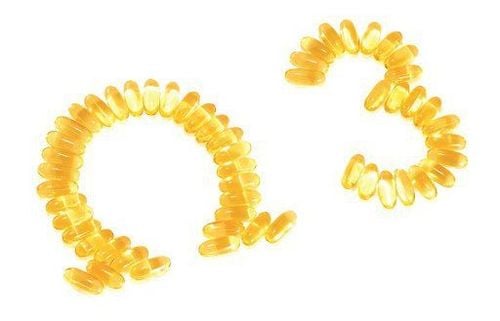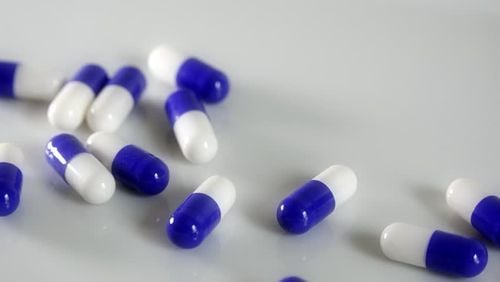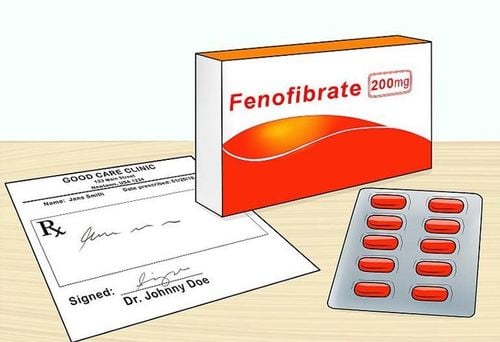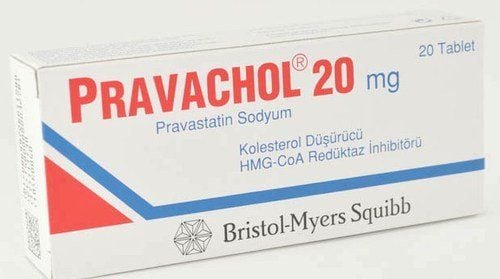This is an automatically translated article.
Niaspan is used with a proper diet and exercise program to help lower "bad" cholesterol and fats (LDL, triglycerides) and raise "good" cholesterol (HDL) in the blood. Niaspan is often used after non-drug treatments are not completely effective at lowering cholesterol.1. What are the effects of Niaspan?
The main ingredient of Niaspan is Niacin. Niacin is also known as vitamin B3 (nicotinic acid), one of the B complex vitamins. It can be used alone or together with other medications.Lowering bad cholesterol, triglycerides and increasing "good" cholesterol helps prevent dangerous complications like stroke and heart attack. Reduced fat may also help reduce the risk of pancreatitis. In addition to eating an appropriate diet (eg low cholesterol/low fat diet), other lifestyle changes that may make Niaspan more effective include exercise, weight loss if you are overweight and stop smoking.
Niaspan is indicated in the following cases:
High cholesterol Treatment slows the progression of coronary artery disease. High blood triglycerides High cholesterol and high triglycerides Preventing heart attack again Too much fat in the blood Low HDL cholesterol Niaspan is contraindicated in the following cases:
Diabetes Gout Amount low blood phosphate Blood clotting disorders increase the risk of bleeding. Alcoholism Heart attack within the last 30 days Low blood pressure Arterial bleeding Stomach ulcers Liver disease Abnormal liver function tests
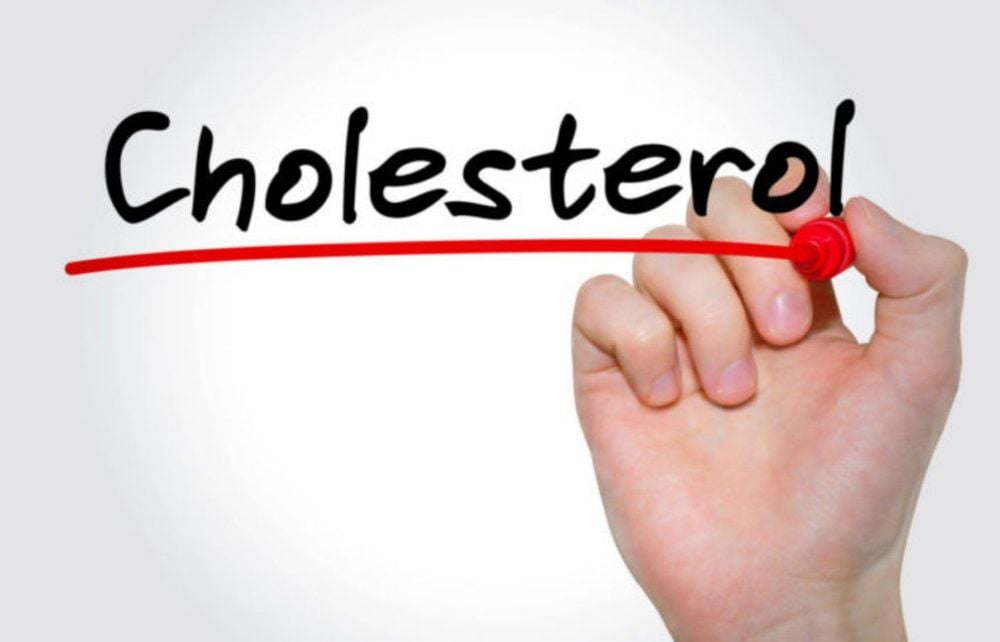
Thuốc Niaspan thường được sử dụng nhằm giảm cholesterol
2. How to use Niaspan
Read the instructions given by your doctor carefully before you start taking Niaspan and each time you get a supplement. If you have any questions about how to use Niaspan, ask your doctor.Niaspan is to be taken by mouth with a low-fat meal or snack as directed by your doctor, usually at bedtime. Taking Niaspan on an empty stomach increases the risk of side effects (such as flushing, upset stomach).
Do not crush or chew Niaspan slow release tablets. Doing so can cause all of the medication to be released at once, increasing the risk of side effects. Also, you should not split the tablets unless they have an index line and your doctor tells you to do so.
Niacin is available in different products. Do not switch between medicines with different concentrations, brands, or forms of niacin. Serious liver problems may occur if you do so.
Niaspan dosage is calculated based on your medical condition and response to treatment. To reduce your risk of side effects, your doctor may direct you to start Niaspan at a low dose and gradually increase your dose.
If you also take certain other medicines to lower cholesterol (such as cholestyramine or colestipol), take niacin at least 4-6 hours before or after taking these medicines. These products may react with niacin, preventing complete absorption of the drug. Continue taking other cholesterol-lowering medications as prescribed by your doctor.
To reduce your risk of Niaspan side effects such as flushing, avoid drinking alcohol, hot drinks, and eating spicy foods near the time you take niacin. Taking a regular aspirin or a nonsteroidal anti-inflammatory drug (such as ibuprofen, 200 milligrams) 30 minutes before taking niacin can help prevent flushing.
Use Niaspan medicine regularly to get the most benefit from it. To help you remember to take your medicine, take it at the same time each day.
Do not stop taking Niaspan without consulting your doctor. If you stop taking niacin, you may have to go back to your original dose and gradually increase it again. Ask your doctor for instructions on how to start again if you have not taken the medicine for a long time (more than 7 days).
It is very important in the treatment of high cholesterol to continue following your doctor's advice regarding diet and exercise.
Tests such as blood lipids, blood sugar, liver function tests should be performed periodically to monitor your progress or check for side effects during treatment with Niaspan.

Sử dụng thuốc Niaspan thường xuyên để có được nhiều lợi ích nhất từ nó kết hợp chế độ ăn uống và tập thể dục hợp lý
3. Side effects of Niaspan
Flushing of the face and neck along with heat, headache, itching, burning, sweating, chills, or tingling may occur within 2 to 4 hours of taking Niaspan. Hot flashes may persist for several hours after application. These side effects should improve or go away as your body adapts to the medicine.Dizziness, stomach upset, heartburn, nausea, vomiting, and diarrhea may also occur. If any of these Niaspan side effects persist or get worse, tell your doctor right away.
To reduce the risk of dizziness and lightheadedness when using Niaspan, get up slowly as you rise from a sitting or lying position. This is important if you are also taking medication to lower your blood pressure.
Remember that your doctor has prescribed Niaspan because he or she has judged that the benefit to you is greater than the risk of side effects. Many people use Niaspan without any serious side effects.
Tell your doctor right away if you have any serious side effects of Niaspan, including: Severe feeling of dizziness/fainting, fast/irregular heartbeat, severe headache (migraine), unusual joint pain, leg/hand swelling, vision problems, severe stomach/abdominal pain, black stools, easy bruising/bleeding, unexplained muscle pain or weakness, persistent nausea/vomiting, signs of kidney problems, dark urine, vomit that looks like coffee grounds, yellowing eyes or skin.
A very serious allergic reaction to Niaspan is very rare. However, if you notice any symptoms of a serious allergic reaction to Niaspan, including: rash, itching/swelling (especially of the face/tongue/throat), trouble breathing, dizziness, Get medical help right away.
Below are Niaspan side effects by likelihood.
Common side effects of Niaspan include:
Indigestion Itching Temporary redness of the face and neck Coughing Nausea Vomiting Diarrhea Less common side effects of Niaspan include:
Low blood phosphate levels Decreased urination Irregular heartbeat worsening peptic ulcer Dry skin Muscle pain Fainting Dizziness Stomach cramps High blood uric acid High blood sugar Rare side effects of Niaspan include:
Myopathy Spasm Laryngitis Hepatitis Leeches Visible fluid retention Shortness of breath Abnormal liver function tests Anaphylaxis Angioedema Pinching sensation on skin Yellowing of eyes or skin due to accumulation of bilirubin Macular edema Decreased prothrombin Migraine Headache Blurred vision Standing hypotension Low blood pressure Skin color changes Muscle weakness Difficulty sleeping Excessive sweating Chills Skin rash Heart pounding Stomach slight Anxiety Body weakness This is not a name Complete list of possible side effects of Niaspan. If you notice other side effects of Niaspan not listed above, contact your doctor immediately.

Khó tiêu là một trong các tác dụng phụ thường gặp của thuốc Niaspan
4. Measures to prevent side effects of Niaspan
Before taking Niaspan, tell your doctor if you are allergic to this medicine and any other allergies you may have. Niaspan products may contain ineffective ingredients that may cause allergic reactions or other problems.Before using Niaspan, tell your doctor your medical history, especially of: Very low blood pressure, alcohol use, bleeding problems, diabetes, gallbladder disease, glaucoma pressure, gout, heart disease, kidney disease, liver disease/elevated liver enzymes, untreated mineral imbalance (low phosphate levels), history of stomach/intestinal ulcers, hypothyroidism.
Niaspan can make you dizzy and alcohol and marijuana can make you more dizzy. Do not drive, use machines, or do anything that requires alertness while using Niaspan, until you can do so safely.
Before surgery, tell your doctor or dentist that you are being treated with Niaspan.
Niaspan may rarely cause your blood sugar to rise, possibly causing or worsening diabetes. If you already have diabetes, check your blood sugar regularly and let your doctor know the test results. Tell your doctor right away if you have symptoms of high blood sugar such as increased thirst/urination. When that happens, you may need to adjust your diabetes medication, exercise program, or diet.
For women during pregnancy, Niaspan should only be used when absolutely necessary. Talk to your doctor about the risks and benefits of the drug for you. Niaspan passes into breast milk, so women who are breastfeeding should consult their doctor before use.
5. Niaspan . Drug Interactions
Drug interactions can change the way Niaspan works or increase your risk of serious side effects. Tell your doctor about all prescription/nonprescription drugs and herbal products you are taking. Do not start, stop, or change the dose of any medicine during treatment with Niaspan without your doctor's approval.Some products that may interact with Niaspan include: Anticoagulants (such as acenocoumarol, warfarin).
Double-check all prescription and non-prescription drug labels as vitamins/ supplements may also contain niacin or nicotinamide. These drugs may increase the risk of side effects if taken together.
Niaspan may interfere with certain laboratory tests (including urine or blood catecholamines, urine glucose tests), possibly causing false test results. Make sure laboratory staff and all your doctors know you are using Niaspan.
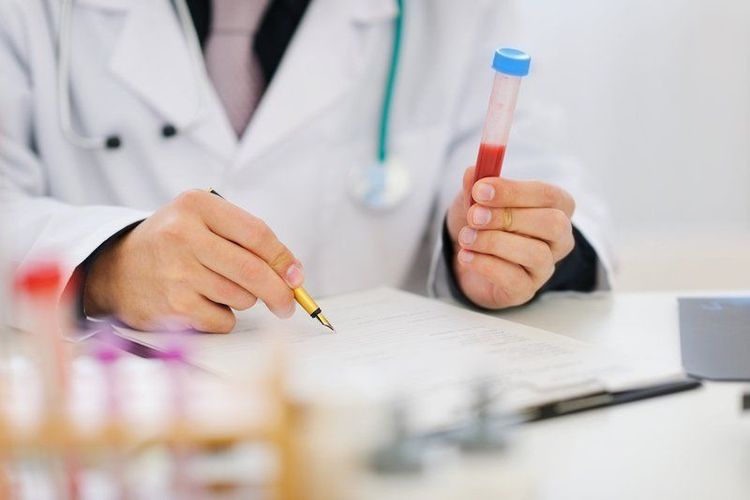
Thuốc Niaspan có thể can thiệp vào một số xét nghiệm trong phòng thí nghiệm
6. What to do when overdose or forget to take Niaspan?
If you or someone else has overdosed on Niaspan and has severe symptoms such as fainting or difficulty breathing, call 911 immediately.If you miss a dose of Niaspan, take it as soon as you remember. If it is almost time for your next dose, skip the missed dose. Use your next dose of Niaspan at the usual time, do not take a double dose.
7. How to store Niaspan thuốc
Store Niaspan at room temperature, away from light and moisture, do not store in the bathroom, and keep it away from children and pets. Dispose of Niaspan products appropriately when they are expired or no longer needed.Please dial HOTLINE for more information or register for an appointment HERE. Download MyVinmec app to make appointments faster and to manage your bookings easily.
Reference source: webmd.com




